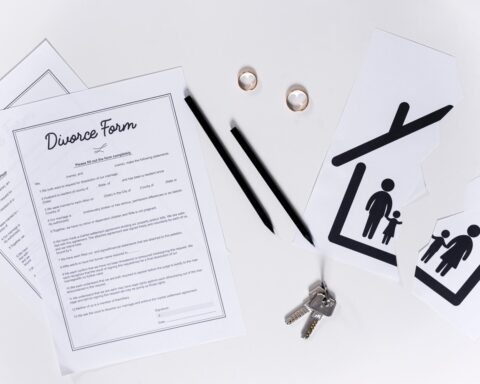In today’s digital era, data is no longer a neutral resource; it is the lifeblood of every enterprise, the element that determines its very survival. Anyone who believes that a data breach or cyberattack is merely a technical inconvenience gravely underestimates the threat. Such incidents are ticking time bombs, opening the door to astronomical fines, protracted legal proceedings, and reputational damage that may never be repaired. For the C-suite, this is not an abstraction: every misstep in the management or protection of information is scrutinized by regulators, courts, and public opinion as evidence of negligence. The fate of the company—and of the executive personally—is at stake. Those who act carelessly may find themselves facing legal catastrophes tomorrow that erase years of effort in a single instant.
Executives operate in a digital minefield where privacy, cybersecurity, and compliance are not separate disciplines but inseparable components of a battlefield where every move counts. The risks extend far beyond the IT department: they permeate financial transactions, strategic decisions, and internal governance, often directly based on data analysis. One error, one missing protocol, one careless document can ignite the fuse in investigations of fraud, corruption, or sanctions violations. International proceedings then follow like an avalanche, and the C-suite faces a ruthless reality in which speed, precision, and anticipation make the difference between survival and destruction.
Managing this reality requires governance that goes beyond mere prevention: it demands visionary leadership that combines legal prudence, technological acuity, and strategic decisiveness into flawless control over all data flows. It is an art that not only protects the continuity of the enterprise but simultaneously enables the necessary innovation and digital transformation. Those who fail to master this balance risk not only the integrity of the organization but also their own position, reputation, and freedom. In this arena, every moment is critical; every decision can mean the difference between triumph and catastrophe.
(a) Contractual Negotiations on Data Processing
Drafting, reviewing, and negotiating contracts concerning data processing is a fundamental legal instrument for protecting both the data controller and the processor. Data Processing Agreements (DPAs) clearly delineate responsibilities and liabilities in accordance with Article 28 of the GDPR. Provisions concerning technical and organizational security measures, incident notification, subprocessors, and international transfers must align with the latest interpretations from European regulators and national courts. In international collaborations, alignment with Standard Contractual Clauses (SCCs) or Binding Corporate Rules (BCRs) is necessary, including mechanisms for oversight and legal protection.
In service agreements where personal data is only processed incidentally, it is essential to determine whether the service provider acts as a processor or an independent controller. This classification defines the legal relationship and the extent of GDPR obligations for each party. Legal advisors must carefully analyze these classifications based on practice, data structures, and influence over the processing purpose, as incorrect classifications can result in unlawful processing and fines.
Joint controller agreements require a detailed description of joint purposes and means, as well as transparent arrangements regarding data subject rights, complaint handling, and liability allocation. Legal structures must be documented in written agreements and actively communicated to data subjects through clear privacy notices. These agreements are closely scrutinized by the Dutch Data Protection Authority (Autoriteit Persoonsgegevens, AP) during complaints or investigations, and unclear or absent written arrangements can lead to sanctions.
International data transfer agreements require extra attention due to the Schrems II ruling, which invalidated the Privacy Shield. Since then, there is increased pressure on companies to implement alternative safeguards, such as adapted SCCs, Transfer Impact Assessments, and encryption protocols. Proper and legally binding documentation of such arrangements is crucial to ensure the legal sustainability of international collaboration.
(b) Advising on Daily Processing Activities
Legal advice on daily processing activities requires deep knowledge of operational processes within organizations. Legal review of data transfers to third countries, for example to service providers outside the European Economic Area, must reflect concrete data flows, storage locations, and access possibilities. Contractual and technical measures must be secured in collaboration with IT departments, with the legal function performing the compliance assessment under Articles 44–49 GDPR.
Marketing campaigns, contests, and direct marketing activities fall under specific provisions of the GDPR and Dutch Telecommunications Act. Legal advice focuses on the lawful basis (consent or legitimate interest), information obligations, and opt-out mechanisms. Every element of the campaign, from tracking pixels to email content, must be legally validated for transparency, purpose limitation, and proportionality.
Data retention policies and retention periods are a critical pillar of compliance. In many sectors, clear regulations on retention periods are lacking, requiring organizations to justify appropriate timeframes based on necessity and risk. Legal guidance is essential in documenting retention periods in policies and contracts, as well as in implementing automated deletion or pseudonymization in IT systems. Inadequate substantiation can lead to violations during AP inspections or civil proceedings.
Complaints from data subjects, such as requests for access, correction, or deletion of data, must be legally reviewed and addressed within the statutory one-month timeframe. Legal assessment is required to determine whether a request can be fully granted, partially granted, or lawfully refused. Simultaneously, organizations must be prepared for objection procedures with the AP or civil proceedings challenging privacy policies.
(c) Establishing a Record of Processing Activities
Creating and managing a record of processing activities in accordance with Article 30 GDPR is a fundamental part of accountability. Legal support is required to define processing purposes, categories of data subjects, data types, and recipients. Each processing activity must be legally assessed for lawful basis, data minimization, and retention period, while sector-specific obligations and special categories of data require additional attention.
The record should not be a mere paper exercise but a living document that is periodically updated based on organizational and technological changes. Legal guidance is essential for structuring the record, assigning responsibility per processing activity, and establishing update procedures. A detailed record prevents errors during AP investigations and provides a solid basis for accountability in audits.
In multinational organizations, records are often spread across multiple entities and jurisdictions. Legal coordination is required to ensure consistency and alignment with local laws. Legal professionals act as intermediaries between functional departments, IT teams, and international legal teams to create a consolidated overview reflecting various risks.
Records are increasingly integrated into Governance, Risk & Compliance (GRC) platforms, where legal validation plays a crucial role. Every change in the processing record must be legally reviewed in advance for compatibility with existing privacy policies, sector-specific legislation, and contractual obligations toward data subjects or regulators.
(d) Drafting Policy Documents and Statements
Drafting policies around data protection is more than a legal formality; it reflects an organization’s compliance level and risk management. Privacy policies, data breach protocols, and retention policies must be aligned with internal practices, technical infrastructure, and applicable law. Legal departments must lead multidisciplinary teams to ensure that all provisions are legally correct, understandable, and practically enforceable.
An effective data breach protocol includes legal steps for internal assessment, notification to the AP, and communication with data subjects. Legal evaluation determines whether notification is required, within which timeframe, and with what content. Every decision must be substantiated with risk analyses, log files, and statements from technical teams to ensure accountability toward regulators.
Retention policies are an integral part of compliance and require legal translation of retention periods into concrete actions within systems. Legal teams draft policies linking retention periods to processing purposes and risks, including exceptions for archiving, statistics, or legal proceedings. Incorrect implementation of retention policies can lead to unlawful processing and fines.
Privacy notices are the primary communication tool with data subjects. Legal departments ensure that notices are clear, complete, and accessible, covering all obligations under Articles 13 and 14 GDPR. Notices must also be periodically updated with changes in technology, policy, or legislation. Legal validation is essential to prevent complaints or sanctions.
(e) Implementing a Cookie Policy
Implementing a legally compliant and technically effective cookie policy requires in-depth knowledge of both the GDPR and the Dutch Telecommunications Act. Cookies and similar technologies, such as pixels and scripts, are widely used for functional, analytical, and marketing purposes but also involve the processing of personal data when tracking user behavior or combining device information. Legal guidance is crucial to determine which cookies may be set without consent and which require explicit, prior consent.
A cookie policy must detail which cookies are used, who places them (first-party versus third-party cookies), for what purposes, and applicable retention periods. Each cookie must be legally classified, distinguishing essential, preference, performance, and tracking cookies. Legal justification of lawful basis, especially when relying on legitimate interest, is required.
Consent for non-essential cookies must comply with the ePrivacy Directive and GDPR: it must be freely given, specific, informed, and unambiguous. This imposes high standards on the operation of cookie banners and consent management platforms (CMPs). Legal review focuses on interface functionality, textual content, and the ability for users to manage or change preferences. The AP scrutinizes these banners strictly, imposing sanctions for unclear or misleading information.
Technical cookie configuration must align with the legally drafted policy. Merely including a cookie statement is insufficient if cookies are set prior to consent or if users lack a genuine choice. Legal validation of operation, for example through audit scripts and test scenarios, is essential. Legal analysis of data flows to third parties is critical, especially outside the EEA.
Changes in website functionality, advertising partners, or legal requirements require updating the cookie policy. Legal professionals ensure periodic review and amendments in banners and statements. Mergers, acquisitions, or restructurings also necessitate re-evaluation of cookie policies, as data sharing through cookies may affect contractual obligations and user privacy rights.
(f) Advising on Implementation of Employee Monitoring Tools
The legal implications of implementing employee monitoring tools are significant due to the asymmetrical power relationship in employment and the sensitivity of the data processed. Employers increasingly use technologies such as email monitoring, location tracking, CCTV, keylogging, and productivity tools. Each form of monitoring affects employees’ privacy and requires a highly careful legal approach, especially regarding proportionality and subsidiarity.
Legal assessment of monitoring tools evaluates whether the intended purpose is legitimate, whether less intrusive means are available, and whether the privacy intrusion is justified. Monitoring is generally only permitted when there is a concrete, demonstrable interest of the employer that cannot be achieved otherwise. Legal advice is essential, also considering case law from the European Court of Human Rights (e.g., Barbulescu judgment).
Implementation of monitoring tools requires a thorough Data Protection Impact Assessment (DPIA) when large-scale or systematic monitoring occurs. Legal guidance determines whether the conditions of Article 35 GDPR are met and how risks to employees’ rights and freedoms can be minimized. Internal procedures for information provision, objection, and complaint handling must also be legally documented.
Furthermore, the works council (OR) or staff representation must be involved in implementing monitoring measures in accordance with Article 27 of the Dutch Works Councils Act (WOR). Legal support is needed to determine if consent is required, how consultation should be conducted, and which documentation must be provided to the OR. Without consent, monitoring measures may be invalidated, with significant consequences for legal validity and evidentiary value.
Finally, the use of monitoring tools must be documented in internal policies such as codes of conduct, ICT regulations, and staff privacy statements. These documents must be legally sound, written in understandable language, and aligned with practical and technical implementation. Legal validation ensures that unlawfully collected data cannot compromise disciplinary or dismissal procedures.
(g) Advising on Connected Services and Graphical Interfaces
The rise of connected services, including Internet of Things (IoT) applications, apps, and platform services, imposes special requirements on personal data protection. These services continuously process data on behavior, location, usage frequency, and preferences, often without users being fully aware of the scope and nature of processing. Legal advice is essential to design the interface to comply with privacy by design and privacy by default principles under Article 25 GDPR.
Graphical interfaces are the primary communication channels between service and user. Legal review of these interfaces ensures compliance with all GDPR information obligations, considering not only content but also placement, formatting, timing, and clarity. Interfaces that are misleading or manipulative (dark patterns) can invalidate consent and result in fines from regulators.
During UI development, consideration of data subject rights is essential. Every user choice regarding consent, profiling, or communication must be explicit, informed, and reversible. Legal review of interface flows ensures, for example, that declining cookies or unsubscribing from marketing communications is as easy as granting consent.
The architecture of connected services requires legal review of data flows, storage locations, interfaces with external APIs, and the allocation of responsibilities between controllers and processors. Every external integration or embedded tool, such as social media plugins or analytics modules, must be legally assessed for necessity, proportionality, and security measures. Insufficient control can lead to unintended data breaches and liability.
Legal advice is also required when using machine learning and automated decision-making in connected services. When user profiles are built and decisions are automated, Article 22 GDPR applies. Users must receive legally valid information about the existence of automated decision-making, including the logic, meaning, and anticipated consequences.
(h) Conducting Data Protection Impact Assessments and Privacy Audits
A Data Protection Impact Assessment (DPIA) is mandatory for processing likely to pose high risks to individuals’ rights and freedoms. Conducting a DPIA requires not only technical knowledge but also a legal framework to identify, assess, and mitigate risks. Legal guidance is crucial to determine whether a DPIA is necessary and how it should be structured under Article 35 GDPR.
A well-executed DPIA includes a description of the processing, an assessment of necessity and proportionality, a risk analysis, and a description of measures to mitigate those risks. Legal support is required to establish applicable law, determine the lawful basis, and identify potential conflicts with data subject rights.
Privacy audits are broader in scope, assessing the organization’s overall data processing policies. Audits evaluate compliance with principles of lawfulness, purpose limitation, transparency, accuracy, integrity, security, and accountability. Legal professionals analyze contracts, policies, processing records, and technical configurations to detect gaps and formulate recommendations.
Both DPIAs and audits require collaboration between legal, IT, and compliance departments. The legal function is responsible for assessing lawful bases, data subject rights, international transfers, and reporting obligations. The adequacy of incident response procedures and management awareness of responsibilities is also evaluated.
Results from DPIAs and audits are used to adjust policies, optimize technical measures, and prepare accountability documentation for regulators. Legal guidance is indispensable to ensure that recommendations are translated into binding instructions, legal documents, and contractual amendments.
(i) Interacting with the Dutch Data Protection Authority (AP)
Engaging with the Dutch Data Protection Authority (AP) requires a strategic legal approach that considers administrative enforcement powers, reputational risks, and the international supervisory environment. Once the AP initiates an information request, investigation, or hearing, a formal administrative procedure arises, requiring legally substantiated actions at every step. Defending an organization necessitates expertise in both substantive data protection law and administrative procedural law.
For information requests or document inspections, careful determination of applicable obligations, deadlines, and protection of confidential or commercially sensitive information is required. Legal arguments regarding scope, necessity, and confidentiality are essential to limit unnecessary exposure and legal risk. In many cases, substantiated defenses must counter the AP’s interpretation.
During hearings, legal representation is essential to present the organization’s position clearly and correctly. The structure of the defense, underlying legal and factual arguments, and presentation style directly affect the AP’s assessment. At the same time, clear communication with the regulator is necessary to avoid escalation leading to fines or sanctions.
Organizations accused of GDPR violations in combination with financial mismanagement, money laundering, corruption, or sanctions breaches face increased risk of integrated investigations. Coordination between legal approaches toward the AP and potential criminal investigations is necessary. Legal alignment ensures that statements or documents in one case do not negatively impact another legal procedure.
Finally, legal expertise is required to anticipate future enforcement and reputational damage. Legal teams continuously monitor AP publications on fines, policy rules, and rulings, and timely risk analyses are conducted. Preventive legal advice and strategic scenarios are necessary to prevent escalation and ensure legal robustness.








